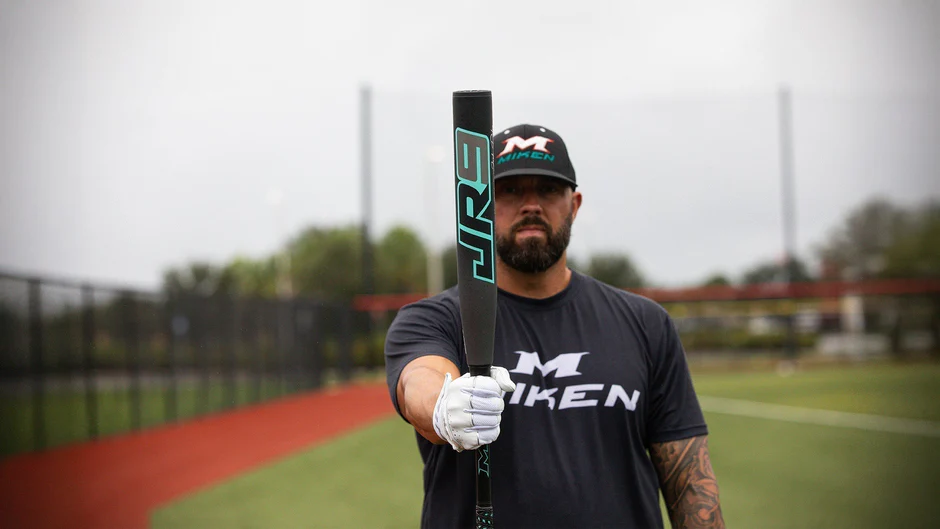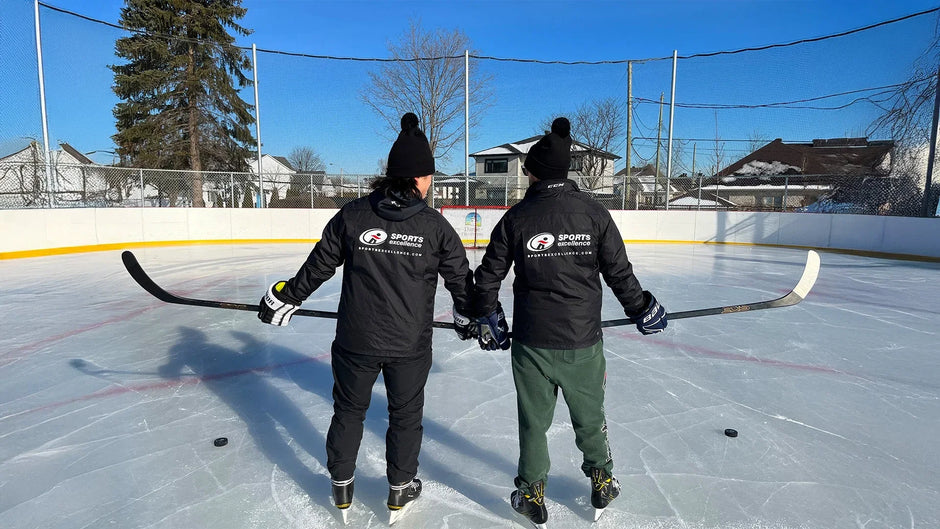Hockey is an intense, high-speed game that requires top-quality protection to keep players safe. The equipment market is filled with various options, so selecting the best protective gear can be overwhelming. This guide will cover everything you need to know when buying hockey protective gear, including the types of protection available, how each piece should fit, the materials and technologies to look for, and tips for finding the right level of protection for your style of play.
What Types of Hockey Protective Gear Are Essential?
Protective gear is required for all players and includes the following pieces:
- Helmet with a cage or visor
- Shoulder pads
- Elbow pads
- Gloves
- Hockey Pants
- Shin guards
- Skates (often classified as protective gear due to their reinforced shells)
- Mouthguard
- Neck guard (optional in some leagues but recommended)
- Jock or jill (protective cup or pelvic protector)
Each piece plays a crucial role in preventing injuries, so it’s vital to understand what to look for in each.
1. Hockey Helmet: Protecting Your Head
Key Questions
- How should a hockey helmet fit?
- What are the safety features to look for?
Fit and Sizing
A helmet should fit snugly without causing discomfort or leaving gaps. It should sit just above your eyebrows and cover the back of your head adequately. Adjustable helmets allow you to fine-tune the fit, which is especially useful for growing players.
Key Features
- Padding Material: Many modern helmets use multi-layered foam, such as VN foam or EPP (expanded polypropylene), designed to absorb high-impact forces.
- Cage or Visor: Most youth leagues require a full cage, while adult players may opt for a visor. Ensure that your cage or visor doesn’t obstruct vision and is firmly secured.
- Certification: Look for certifications like HECC, CSA, or CE, indicating the helmet meets specific safety standards.
2. Hockey Shoulder Pads: Guarding Your Upper Body
Key Questions
- What level of padding do I need?
- How can I ensure maximum mobility?
Fit and Sizing
Shoulder pads should cover your collarbone, chest, and upper arms without restricting movement. Look for an adjustable chest or back panels for a more personalized fit.
Key Features
- Padding Technology: High-density foam and plastic inserts provide both lightweight protection and flexibility.
- Coverage: Shoulder caps should extend enough to cover the shoulder joint fully. Some pads offer enhanced sternum or spine protection.
- Breathability: Good ventilation and moisture-wicking materials help keep you comfortable during play.
3. Hockey Elbow Pads: Protecting Your Elbows and Forearms
Key Questions
- How should elbow pads feel when worn?
- How do I prevent elbow pads from slipping?
Fit and Sizing
Elbow pads should fit securely over your elbow without restricting arm movement. They should cover the area from the middle of your upper arm down to the top of your glove.
Key Features
- Strap System: A reliable strap system ensures the pad stays in place. Look for pads with adjustable straps to help secure them without cutting off circulation.
- Protection Level: Choose pads with hard outer shells and high-density foam in impact zones for added protection.
- Lightweight Materials: Modern elbow pads use lightweight, flexible materials to allow for an extended range of motion.
4. Hockey Gloves: Grip and Hand Protection
Key Questions
- What glove size do I need?
- What materials provide the best durability?
Fit and Sizing
Your gloves should fit snugly around your hands and wrist, with enough flexibility to maintain a secure grip on the stick. When sizing, consider both hand width and finger length for a more accurate fit.
Key Features
- Palm Material: Leather and synthetic palms provide different levels of durability and feel. Look for reinforced palms for longevity.
- Protection and Padding: Thick padding on the back of the hand and fingers is essential for protecting against slashes.
- Flexibility: Some gloves incorporate segmented padding and flexible wrist cuffs for a full range of motion
5. Hockey Pants: Covering Your Lower Body
Key Questions
- Should I choose pants or a girdle?
- What protection is essential for hockey pants?
Fit and Sizing
Pants or girdles should fit around the waist without sliding down and should cover the thighs and lower back. Some pants feature suspenders for added stability.
Key Features
- Padding and Coverage: Look for high-density foam and plastic inserts in the thigh, hip, and tailbone areas.
- Flexibility vs. Protection: Girdles are tighter and can offer a more streamlined fit, while pants provide a looser fit with added protection for high-impact zones.
- Ventilation: Breathable materials improve comfort and reduce heat buildup.
6. Hockey Shin Guards: Essential Lower Leg Protection
Key Questions
- How should shin guards fit?
- What’s the difference between anatomical and traditional shin guards?
Fit and Sizing
Shin guards should cover from just below the kneecap to the top of your skate tongue. When bending your knee, the pad should stay securely in place.
Key Features
- Anatomical vs. Traditional Fit: Anatomical shin guards are contoured to fit the leg closely, while traditional guards are looser.
- Knee Protection: Look for reinforced knee caps that protect against puck impact and falls.
- Lightweight and Durable Materials: High-density foam and molded plastic provide protection without unnecessary weight.
7. Hockey Skates: Support and Impact Absorption
Key Questions
- How do hockey skates contribute to lower body protection?
- What fit is best for different foot types?
Fit and Sizing
Hockey skates should feel snug with no extra room for the foot to shift. Different brands provide various fit profiles for wider or narrower feet.
Key Features
- Ankle and Heel Support: Look for stiff ankle and heel support to prevent rolling or slipping.
- Impact Protection: Reinforced toe caps and footbeds protect against impact, particularly from puck strikes.
- Comfort and Padding: Good skates should provide arch support and padding around pressure points to reduce fatigue and discomfort.
8. Hockey Mouthguard: Essential for Protecting Teeth and Jaw
Key Questions
- What type of mouthguard is best for hockey?
- How should a mouthguard fit?
Types and Fit
There are two main types of mouthguards: boil-and-bite and custom-fit. Boil-and-bite mouthguards are affordable and widely available. They are heated and then molded to your teeth, providing a semi-custom fit. Custom-fit mouthguards, made by dental professionals, offer superior comfort and protection but come at a higher cost.
Key Features
- Breathability: Mouthguards with breathing channels help players maintain airflow while skating.
- Protection Level: Look for mouthguards made with high-impact materials that can absorb shocks to the teeth and jaw.
- Size and Comfort: Ensure your mouthguard doesn’t restrict your ability to speak or breathe easily. A well-fitted guard will sit comfortably without moving during play.
9. Hockey Neck Guard: An Added Layer of Safety for the Neck
Key Questions
- Why is a neck guard recommended?
- What type of neck guard is most comfortable?
Fit and Importance
Neck guards are not required in all leagues but are highly recommended, especially for younger players. They cover the vulnerable neck area and can prevent cuts and abrasions from sticks, pucks, and skates. Neck guards should fit snugly around the neck without restricting head movement.
Key Features
- Cut-Resistant Material: Look for neck guards made with cut-resistant fibers like Kevlar, which add an extra layer of protection against skate blade injuries.
- Breathability: Good neck guards use moisture-wicking, breathable materials to reduce heat buildup.
- Comfort and Flexibility: Many neck guards feature a thin design with flexible materials for a lightweight feel that doesn’t hinder mobility.
10. Hockey Jock or Jill: Core Protection for Hockey Players
Key Questions
- What’s the difference between a jock and a jill?
- What features enhance comfort and mobility?
Fit and Differences
A jock (for male players) or jill (for female players) protects the groin area from high-impact hits and falls. Jocks typically include a protective cup, while jills are designed with a pelvic protector. These pieces of equipment should fit snugly but comfortably around the waist, providing a secure hold for the protective cup or pelvic shield without impeding movement.
Key Features
- Cup or Shield Material: High-density plastic or composite materials offer excellent protection without adding too much bulk.
- Support System: Some jocks and jills come with compression shorts or integrated velcro for better support and a secure fit, while others use jock shorts or garter belts.
- Moisture Control: Look for jocks and jills with moisture-wicking fabrics to keep you dry and comfortable throughout games or practices.
Additional Considerations for Buying Hockey Protective Gear
Comfort and Fit Over Style
Choosing comfortable, well-fitting equipment is more important than choosing gear based on style alone. Proper fit ensures that protective gear stays in place and effectively reduces the risk of injury.
New vs. Used Gear
If you’re on a budget, some equipment can be bought secondhand. However, avoid buying used helmets or gear with visible signs of wear. New gear offers the latest technology and hasn’t experienced any material degradation.
Level of Play
For casual or recreational hockey, you may not need the most advanced (and expensive) equipment. High-level players will benefit from advanced protection technologies, as they face higher speeds and more frequent collisions.
Cleaning and Maintenance
Regular cleaning extends the life of your gear and helps reduce bacteria build-up. Many items, like gloves and pads, can be hand-washed or put in a machine (check manufacturer recommendations). Replace equipment like helmets and gloves as they wear down, especially if padding or structural integrity is compromised.
Frequently Asked Questions About Hockey Protective Gear
- How do I know when to replace my hockey gear? Inspect gear regularly for cracks, tears, or compressed padding that no longer absorbs impact effectively. Replace items as needed for maximum protection.
- What gear do I need to start playing hockey? At a minimum, you’ll need a helmet, gloves, shoulder pads, elbow pads, shin guards, pants/girdle, skates, and a stick. Mouthguards and protective cups are also recommended.
- Is custom-fitted gear worth it? For advanced or competitive players, custom gear can offer enhanced protection and comfort tailored to your unique size and playing style.
- How can I improve the smell of hockey gear? Use anti-bacterial sprays, and consider a drying rack to air out equipment after each use. Regularly washing soft pads or liners can also help reduce odor.
Protect Your Body With Elite Level Gear
Selecting hockey protective gear requires balancing comfort, fit, and protection. By focusing on the right fit and key protective features for each piece of equipment, you can ensure that you’re both safe and ready to play your best on the ice. Make sure to try on different brands and prioritize quality – and don’t hesitate to replace or upgrade gear as you grow and develop your skills. With the right setup, you’ll be able to play hard and stay safe.





















